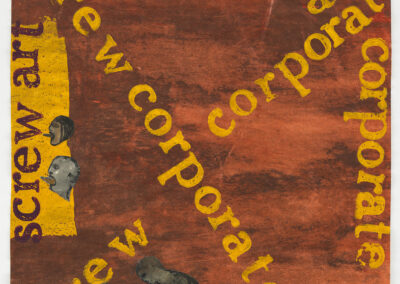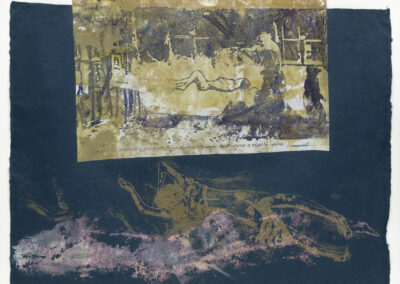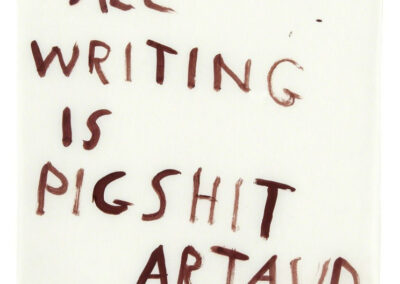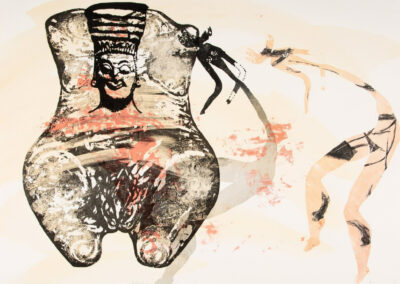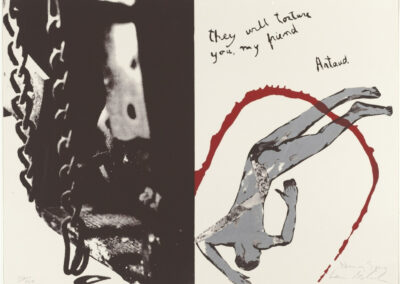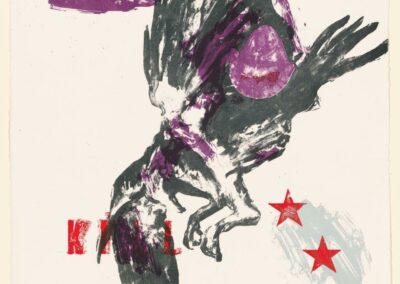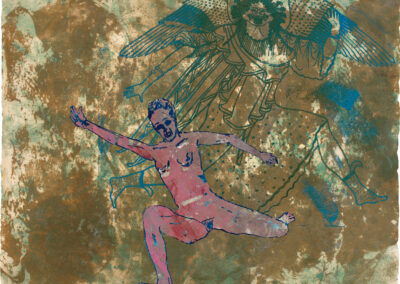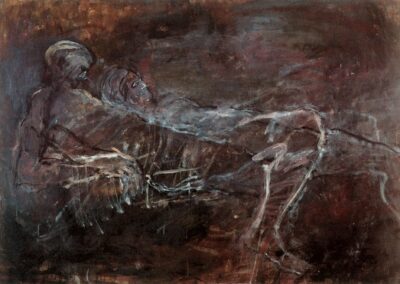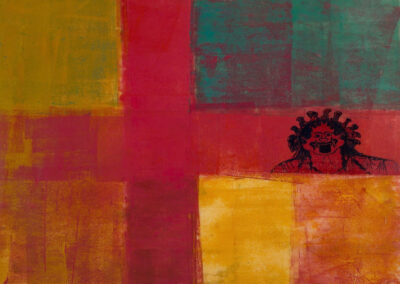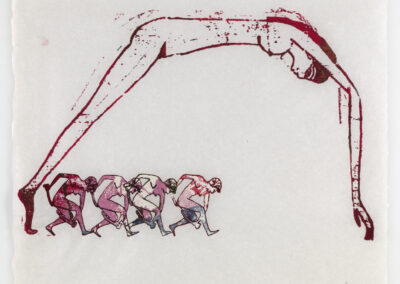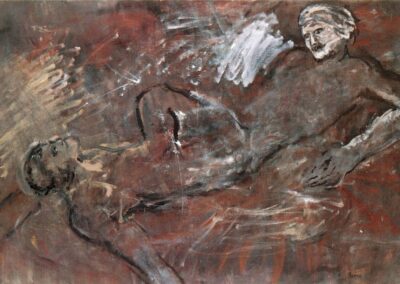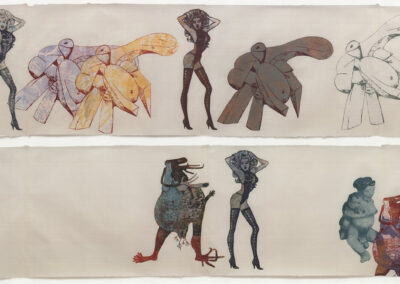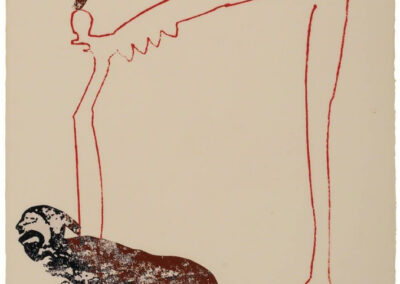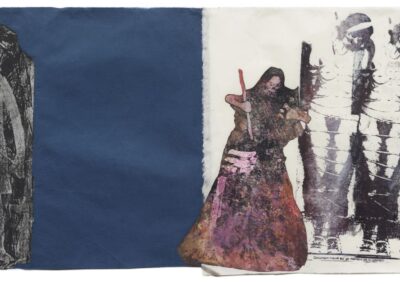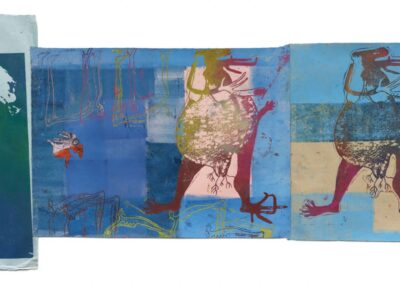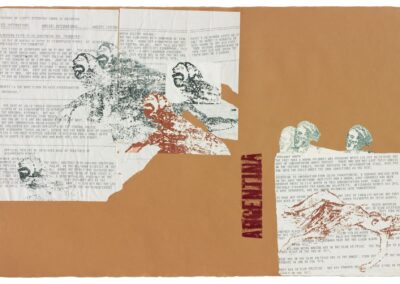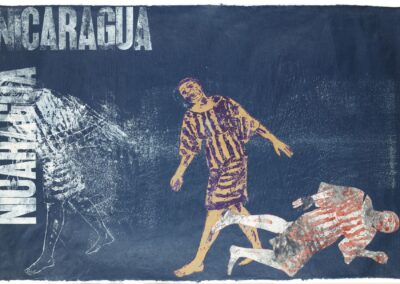Our next Artist You Need To Know is Nancy Spero (August 24, 1926 – October 18, 2009). Spero was an American artist who was born in Cleveland, but lived for much of her life in New York City. She described her own practice as work that “speculates on a sense of possibility and comments upon immediate events, political, sexual and otherwise.”
Spero briefly was at the University of Colorado but earned a BFA from the School of the Art Institute of Chicago (1949). Later she would study at the Ecole des Beaux-Arts and Atelier André L’Hote in Paris (1949–1950). In 1951, she married the visual artist Leon Golub (1922-2004), whom she periodically collaborated with, and they lived in Paris from 1959 to 1964, before moving to New York City.
-
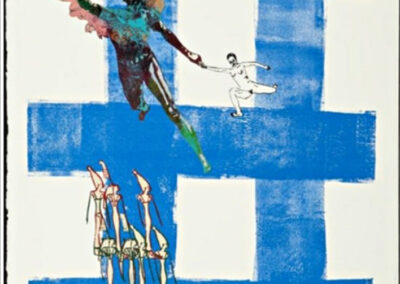
Airborne, 1998
-

Screw Corporate Art, 1974
-

Untitled (Cimetière de Varsovie à l'extérieur du ghetto), n.d.
-

All writing is pigshit, 1970
-

Goddess II, 1987
-

They will torture you, my friend, 1971
Over a half century career, Spero blended art and activism in her work, always incorporating contemporary political, social, and cultural concerns (whether at ‘home’ in the United States or the many theatres of conflict around the world where the U.S.A. was involved, such as Argentina or Nicaraugua). Spero “chronicled wars and apocalyptic violence as well as articulating visions of ecstatic rebirth and the celebratory cycles of life. Her complex network of collective and individual voices was a catalyst for the creation of her figurative lexicon representing women from prehistory to the present in such epic-scale paintings and collage on paper as Torture of Women (1976), Notes in Time on Women (1979) and The First Language (1981). In 2010, Notes in Time was posthumously reanimated as a digital scroll in the online magazine Triple Canopy.” (from here) Female figures often acted “as protagonists in her artwork”, straddling both self portraiture but shifting standard narratives in Western art to a more feminist positioning around larger social issues.
-

Kill Commies, 1988
-

Gorgon and Runner, 1995
-

Lovers V, 1962 - 65
-

She Turns Men to Stone, 1996
-

The Dance, 1993
-

Lovers VII, 1964
Spero’s installation Maypole/Take No Prisoners was presented at the Venice Biennale in 2007, and her last monumental scroll work Cri du Coeur was shown at the 2010 Bienal of Sao Paolo. She was also featured in the Gwangju Biennale (2000), Whitney Biennial (1993), and Documenta X (1997). Major monographic exhibitions of Spero’s work have been shown at the Museo d’Art Contemporani de Barcelona; Centro Galego de Arte Contemporanea, Santiago de Compostela, Spain; de Appel Arts Centre, Amsterdam; Institute of Contemporary Art, London; Kunsthalle zu Kiel, Germany; and Museum of Contemporary Art, Chicago. Spero’s most recent retrospective was organized in 2010 by the Centre Georges Pompidou in Paris, and traveled to the Serpentine Gallery in London in March 2011.
-

Picasso and Frederick's of Hollywood, n.d.
-

Untitled, 1983
-

Death Figure / Gestapo, 1994
-

The Injection II, 1997
-

Argentina, 1981
-

Nicaragua, 1986
A fine summation of Spero’s importance, upon her passing (a “vital, energetic artist who could be funny as well as macabre”) can be read here. A more in depth and engaging overview of her life and work can also be enjoyed here.

